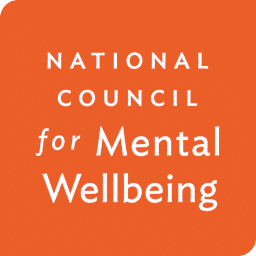Attention-deficit/hyperactivity disorder (ADHD) is a neurodevelopmental disorder that affects many children around the world. According to the National Resource Center on ADHD of Children and Adults with Attention-Deficit/Hyperactivity Disorder (CHADD), approximately 5.3 million children have been diagnosed with the condition.
At a glance, this condition is characterized by persistent patterns of inattentive, hyperactive, and impulsive behaviors. These patterns can significantly impact a child’s behavior and functioning in various settings, particularly at home and at school.
In this post, we will explore all the facets of ADHD with a focus on children, including its definition, symptoms, diagnosis, treatment options, and strategies for managing the condition in daily life.
Here is everything you need to know about children with ADHD.

Understanding ADHD: Definition and Prevalence
ADHD, previously known as attention deficit disorder, is not average child behavior. It is included in the Diagnostic and Statistical Manual of Mental Disorders as a recognized psychiatric condition requiring appropriate diagnosis and management.
According to the American Psychiatric Association (APA), ADHD is one of the most common mental health disorders diagnosed in children. Adults can also have ADHD. The APA estimated 8.4% of children and 2.5% of adults have ADHD.
These figures come from a 2018 and 2009 registry. The statistic on children is close enough to the recent data on CHADD, where the 5.3 million children with ADHD yield 8.7%. These children include individuals aged between 3 and 17.
Causes and Risk Factors of Attention-deficit/hyperactivity disorder in Children
Although the exact causes of attention-deficit/hyperactivity disorder remain unknown, research suggests that it is likely a combination of genetic, neurological, and environmental factors. Children with a family history of attention-deficit/hyperactivity disorder or other mental health disorders may be included to develop ADHD themselves.
In addition, certain prenatal and early childhood factors may increase the risk of ADHD. For instance, the APA mentions tobacco smoke exposure, lead exposure, alcohol or drug use during pregnancy, premature birth, and low birth weight among the causes.
Recognizing the Symptoms of ADHD in Children
Recognizing ADHD symptoms is crucial for early intervention. We can categorize a child’s symptoms into three main types:
- Inattentive symptoms: These include trouble paying attention, getting easily distracted, and poor organizational skills.
- Hyperactive symptoms: These symptoms manifest as constant motion, trouble staying seated, and difficulty waiting for his or her turn.
- Impulsive symptoms: Impulsive behavior includes difficulty with self-control and constantly interrupting others.
A mental health professional may diagnose ADHD if the child exhibits one or a combination of any of these symptoms.
The Importance of Early Diagnosis and Intervention
Early diagnosis and intervention play a critical role in managing ADHD in children. Timely identification of ADHD symptoms allows parents, caregivers, and mental health professionals to provide appropriate support and identify treatment methods.
Through early intervention, children with ADHD can learn strategies to manage their symptoms, improve their school functioning, and enhance their overall quality of life. Since adults can have ADHD, having the skills as early as possible can be helpful.
Different Types of ADHD in Children
ADHD can manifest differently in children. Three main subtypes exist, including:
- Predominantly inattentive presentation: This ADHD subtype makes children struggle with inattentive symptoms. They may have trouble focusing, be easily distracted, and appear forgetful or disorganized.
- Predominantly hyperactive-impulsive presentation: Children with this ADHD subtype are hyperactive and impulsive. They may have difficulty sitting still, take action without thinking, make seemingly careless mistakes, partake in risky behaviors, and have trouble waiting their turn.
- Combined presentation: Children with this subtype display symptoms of both inattentive and hyperactive-impulsive presentations.
ADHD and Its Impact on Academic Performance
Mental disorders like ADHD can significantly impact a child’s academic performance. Children with attention-deficit/hyperactivity disorder may struggle with staying focused, completing tasks, following instructions, and managing their time effectively.
These challenges can lead to academic difficulties, lower grades, and impaired learning. However, with appropriate support and accommodations, children with ADHD can manage their symptoms and thrive academically.
Managing ADHD: Strategies for Parents and Caregivers
Parents and caregivers play a vital role in helping children with ADHD manage symptoms and succeed in various areas of life. Here are some helpful tips:
- Establish consistent routines and schedules to provide structure.
- Break tasks into smaller, manageable steps.
- Use visual aids and reminders to improve organization and time management.
- Provide clear and concise instructions, and check for understanding.
- Encourage regular exercise and physical activity to help manage hyperactivity.
- Foster a supportive and understanding environment at home.
Medication Options for Treating ADHD in Children
Depending on the ADHD diagnosis, a child’s doctor may prescribe ADHD medicine to manage symptoms. Most prescriptions include stimulant medications such as amphetamines and methylphenidate.
These medications have been effective in reducing hyperactivity and improving attention and impulse control in ADHD-diagnosed children. However, it is important to consider medication as a part of a comprehensive treatment plan even with professional guidance.
Alternative Approaches: Behavioral Therapy and Parent Training
Behavior therapy and parent education are important components of ADHD treatment. Behavioral therapy involves helping children develop strategies to manage their symptoms and consciously improve their behavior. It teaches skills such as problem-solving, self-control, and effective communication.
Meanwhile, parent training equips parents with strategies and techniques to support their child with ADHD. Many parents may want to consider this alternative approach as ADHD medication can be rather expensive. This strategy focuses on helping parents understand how to manage their child’s behavior problems and create a positive, structured home environment.
Creating an ADHD-Friendly Environment at Home and School
Family members of a kid with ADHD and the child’s teachers can work together to be more aware of the child’s symptoms and other children with common symptoms of ADHD. At home, providing a calm and organized space with minimal distractions is important.
Establishing consistent routines, setting clear expectations, and using visual aids can also help. A child’s teacher can also use these techniques. Similarly, the child’s school can create an individualized education plan to accommodate the child’s specific needs.
School environments must also look into the laws protecting children’s rights, specifically the Individuals with Disabilities Education Act (IDEA) and Section 504 of the Rehabilitation Act. These may help them create strategies for children with trouble concentrating and difficulty sustaining attention.
Supporting Social Skills Development in Children With ADHD
Children with ADHD may struggle with social skills, impacting relationships and interactions with peers. Parents and teachers can encourage participation in structured activities to help manage the child’s developmental disorder. This way, children can develop stronger social skills and build meaningful connections despite their condition.
Helping Children With ADHD Thrive: Tips for Teachers
Teachers of children with ADHD can practice the following tips for their classroom:
- Create a structured and predictable classroom environment.
- Provide clear and consistent instructions.
- Use visual aids and cues to support learning.
- Offer opportunities for movement and physical activity breaks.
- Provide positive reinforcement and praise for appropriate behavior.
- Collaborate with parents, a developmental pediatrician, or a child psychiatrist to create a support team.
Navigating ADHD in Adolescence: Challenges and Solutions
Children with ADHD tend to become adolescents with the same learning disabilities and trouble staying focused in elementary school. Thus, they could face increased struggles with more age-appropriate demands.
It is important to equip children with the skills as soon as possible. Similarly, parents, teachers, and healthcare professionals would do well to collaborate to accommodate these children.
ADHD and Co-Occurring Conditions: Understanding Comorbidity
Children with ADHD can have other co-occurring conditions, such as anxiety, depression, and oppositional defiant disorder (ODD). Understanding and addressing these other conditions is critical for an accurate diagnosis to treat ADHD comprehensively.
Addressing Stigma and Building Self-Esteem in Children With ADHD
Kids with ADHD may struggle with low-self esteem and face stigma associated with their condition. Fostering acceptance in two or more settings in a child’s life can help a child learn to build their self-esteem.
ADHD and Family Dynamics: Supporting Siblings and Parents
ADHD affects a child’s parents and siblings as much as it does them. For instance, siblings can be jealous of the child who gets special attention. Meanwhile, a parent may be unprepared to deal with an overly active child and get frustrated. It is important to seek professional advice or even support groups to maintain healthy family dynamics.
The Role of Nutrition and Exercise in Managing ADHD
Nutrition and exercise can help manage ADHD. Remember, these alone cannot treat ADHD despite their supportive roles. Research in the National Institute of Health mentions how omega-3 fatty acids can help contribute to symptoms of inattentiveness.
Balancing Screen Time and Technology Use for Children With ADHD
Most children nowadays have some sort of mobile device on hand. Establishing limits to encourage healthy screen-free activities may help children develop healthier habits to minimize ADHD symptoms.
Final Thoughts for an ADHD Diagnosis
ADHD is a complex condition that requires understanding, support, and appropriate management. By recognizing the symptoms of ADHD, seeking professional help, and implementing strategies to manage ADHD symptoms, children with ADHD can thrive academically, socially, and emotionally.
Every child’s behavior is unique, and a comprehensive and individualized approach is key to supporting their specific needs. With the right tools and resources, children with ADHD can lead fulfilling and successful lives.
If you have concerns about your child’s behavior, seek professional guidance from our team at CarePlus New Jersey.
Sources:
https://chadd.org/about-adhd/general-prevalence/
https://childmind.org/article/what-is-the-difference-between-add-and-adhd/
https://www.psychiatry.org/patients-families/adhd/what-is-adhd
https://www.psychiatry.org/patients-families/adhd
https://www.ncbi.nlm.nih.gov/pmc/articles/PMC5603098/

CarePlus NJ, INC. is dedicated to excellence in mental healthcare and has a commitment to life-long support needed by individuals and their families to ensure that they achieve their full potential and improve the quality of their lives.








